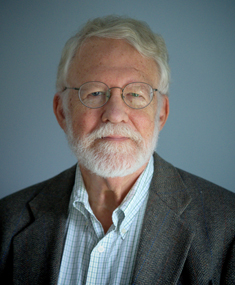Printed in the Spring 2025 issue of Quest magazine.
Citation: Keene, Douglas, "Daimons and Spirit Guides" Quest 113:2, pg 10-11
By Douglas Keene, National President
 This issue of Quest magazine is devoted to the theme of daimons and spirit guides. What images are conjured up when we contemplate this topic! Descriptions and renderings of these entities go back to our earliest history, and likely long before. Archangels, guiding angels, guardian angels, ascended ancestors, power animals, and many other energies are purported to give spiritual guidance. How can we know if such entities exist?
This issue of Quest magazine is devoted to the theme of daimons and spirit guides. What images are conjured up when we contemplate this topic! Descriptions and renderings of these entities go back to our earliest history, and likely long before. Archangels, guiding angels, guardian angels, ascended ancestors, power animals, and many other energies are purported to give spiritual guidance. How can we know if such entities exist?
Certainly direct experience and communication are the most authentic evidence, but even this may be suspect: perhaps there are elements of dreaming, illusion, delusion, hallucinations, illness, or other possible explanations. For those that have not had direct interaction with spirits, testimonials from reliable sources may be convincing, but it’s far from inconvertible. Many claim interaction with the spirits through psychic or mystical experience (which are two quite different phenomena), near-death episodes, channeling, and other methodologies.
William Butler Yeats, the Irish poet and dramatist, wrote, “The world is full of magic things, patiently waiting for our senses to grow sharper.” Is this the case with spirit guides? Can we seek them out? Will they be credible resources for helping with life choices?
C.W. Leadbeater, a prominent Theosophist from the last century, wrote, “Among the beautiful conceptions which Theosophy has restored to us stands pre-eminent that of the great helpful agencies of nature.” In fact, he wrote an entire book on the subject entitled Invisible Helpers, arguing that we all can become helpers or guides on a higher plane during our sleep phase or between incarnations.
Are these higher beings—if indeed that’s what they are—always beneficent? H.P. Blavatsky, writing of angel guides in the Theosophical Glossary, defines “Vidyâ-dhara and Vidya-dhari [as] male and female deities. Lit., ‘possessors of knowledge’ . . . They are also called Nabhas-chara, ‘moving in the air,’ flying, and Priyam-vada, ‘sweet-spoken.’ They are the Sylphs of the Rosicrucians; inferior deities inhabiting the astral sphere between the earth and ether; believed in popular folk-lore to be beneficent, but in reality they are cunning and mischievous, and intelligent Elementals, or ‘Powers of the air.’”
In his well-known poem “The Guest House,” Rumi, the thirteenth-century poet and Islamic scholar, wrote, “Be grateful for whoever comes, because each has been sent as a guide from beyond.”
Was he referring to spirit guides, prominent thoughts, impactful moods, or earthly visitors? All can be helpful in our spiritual search if interpreted properly. All experiences can be educational. All interactions are potentially enlightening. Where can we find that Voice of the Silence that speaks the truth to us?
In Light on the Path, Mabel Collins tells us that we should “obey the Warrior” and “let him fight in thee.” This, however, seems metaphorical, describing an inner intuition as a guide, a deeper part of our own being, rather than an external presence to whom we should submit.
Geoffrey Hodson was a prolific twentieth-century Theosophical author who wrote extensively about devas and angels. He describes nature spirits in several works, and in 1935 he published a book titled The Coming of the Angels. He writes about “the revival of the ancient mysteries” and the rise of spiritualism, which he attributes in part to Sir Arthur Conan Doyle’s Coming of the Fairies. He notes that Doyle promulgates “the idea of the brotherhood of angels and of man and his growing acceptance at this time, may, perhaps, be regarded as another manifestation of the same influence.”
Hodson quotes “a teaching angel” quite extensively, beginning in the first chapter: “In the olden days when an ancient race was born and reached its prime, angels walked with men. When national decay set in, spiritual darkness fell upon the race, men knew us not, and we per force withdrew . . . Once more a new age dawns and the new race is being born. The time of reunion has come; again the angel and the human branches of the family of God shall know themselves as one.”
Hodson goes into a great deal of descriptive detail and writes that he has been instructed on numerous occasions by spiritual manifestations. In chapter 3 he addresses “The Color Language of the Angels.” He notes that “the ‘speech’ of the angels produces color and form rather than sound. A system of symbology is included in their mode of communication, symbols and flashes of color appearing in a mental atmosphere as natural expressions of angelic thought.”
Hodson notes that these mental impressions can be made wordlessly, through colors and other symbols. Yet he is able to quote verbatim long passages amounting to dozens of pages of what appears to be angelic expression. He describes a natural link between human beings and angelic entities, who can work together for the good of humankind at both the physical and supersensory levels. Hodson’s clairvoyance and clairaudience, of course, were very useful in this communication and largely directed his energies as he systematically explored the unseen (to most of us) angelic kingdoms.
Do daimons and spirit guides need to coexist? Does each require the other, such as in good and evil? Does each beget the necessity of the opposite? There is the classic cartoon of having an angel on one shoulder and the devil on the other, pulling us in opposite directions, obliging us to choose what we want for ourselves in a particular circumstance. Perhaps our desires are in conflict with our conscience. Perhaps we are weighing the benefits and the liabilities (often unknown). What level of risk are we willing to accept in order to achieve what we want in the moment? How do we seek advice and direction? What are we longing to know?
There are many dangers along the way. We must sort the true from the false, whether in our own minds or in the messages we receive. There are many impostors waiting for us out there, and it’s easy to be deceived. In her book Living in Wisdom, Joy Mills notes:
There are many today seeking shortcuts on this path [the search for the divine], or who get ensnared in the forests of psychic phenomena. And there are those who fail. But failure is not a finality; it is possible for us to pick ourselves up, disentangle ourselves from the briars of psychic glamour that have ensnared us, and continue on the quest.
How, then, are we to navigate this ethereal world? Where are the handholds and solid footing to be found? It would be helpful to return to the basic Theosophical concepts (expressed in At the Feet of the Master) of discernment and nonattachment. If we are able to act truly, we will know the path to follow. If we are selfless in our endeavors, this will be our talisman. If we search for opportunities for service, they will come to us. If we can set aside what is merely of benefit to our own being, then we will reap the greatest reward. If we find the inner self, we cannot be led astray.

